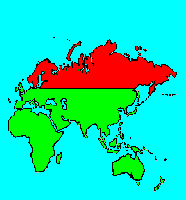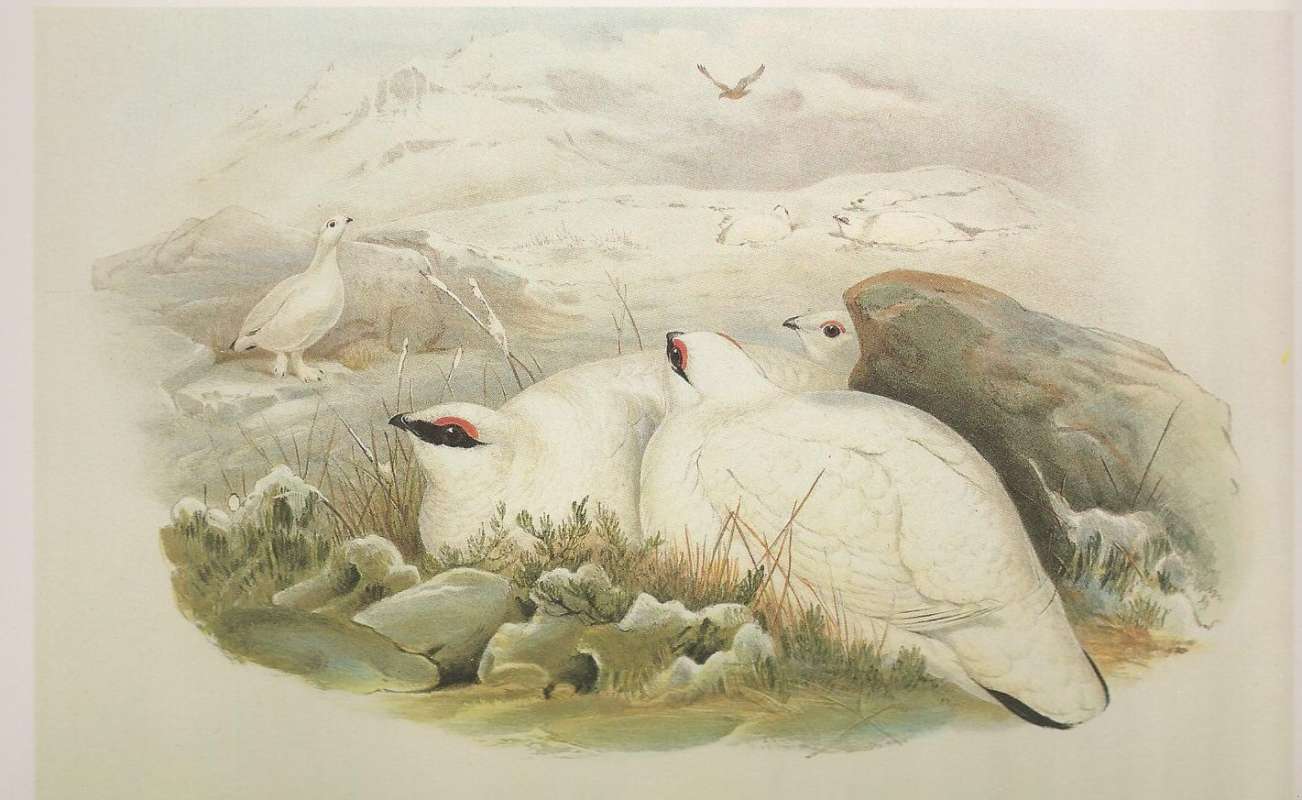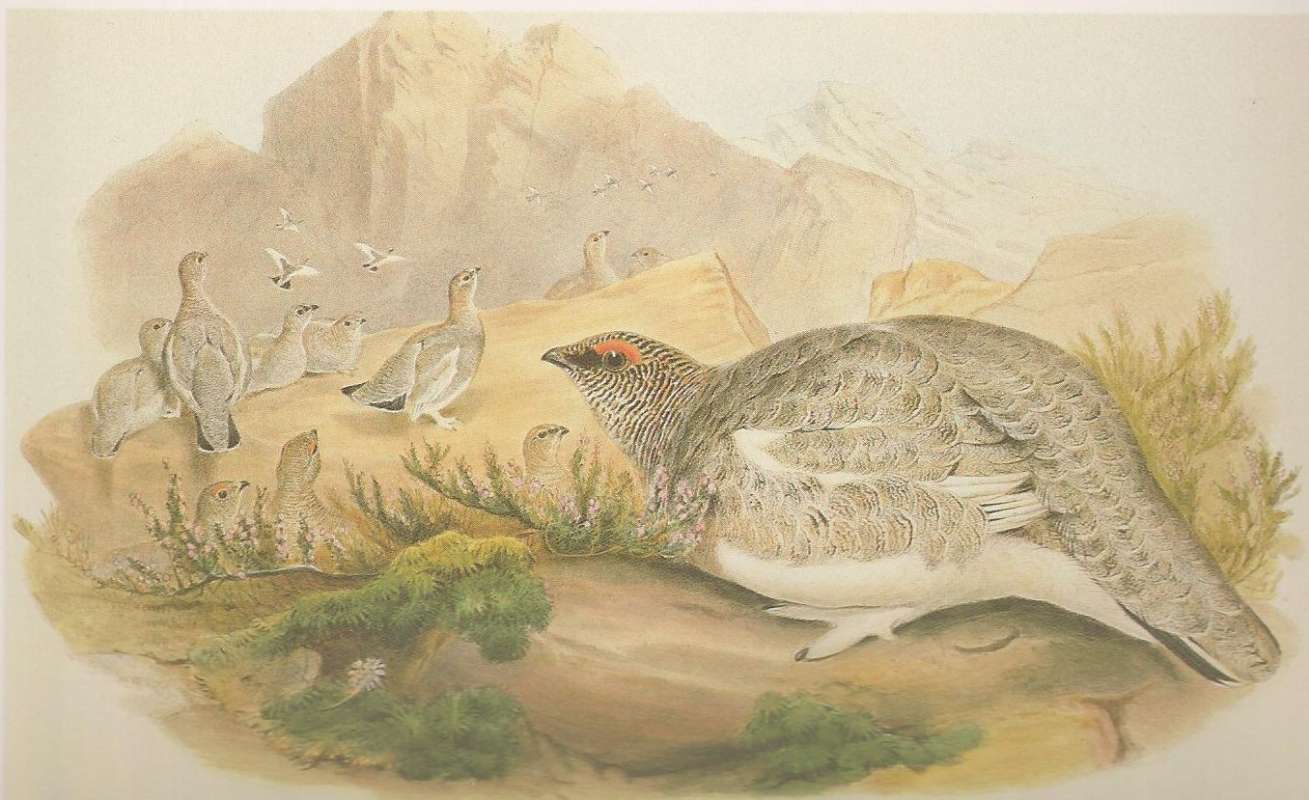SPECIES INFO
Rock Ptarmigan (Lagopus mutus to Lagopus muta) is found circumpolar in the arctic regions. In Europe this is found as far south as southern France, but most European populations are in Scandinavia. This is also found in the northern British Isles. It is very similar in coloration to the Willow Ptarmigan, but the smaller size, thirteen inches, helps separate it from its larger relative.
This is a very complex species. Clements in 2007 listed 31 subspecies. 15 are found in the Old World, and 16 are found in the New World. We list a few of the more widespread forms: The nominate subspecies, ssp muta, is found in Norway, Sweden, and Finland. This is also found in the Kola area of extreme NW Russia. The subspecies millaisi is found in Scotland. The subspecies pyrenaica is found in the Pyrenees. The subspecies helvetica is found in the Alps. The subspecies japonica is found on Honshu in Japan.
In the New World the subspecies kelloggae is found in Alaska and northern Yukon. There are 8 separate subspecies found in the Aleutian Islands. The various subspecies saturata, capta, reinhardti, and islandorum are all found in Greenland and Iceland. The subspecies welchi is found in Newfoundland.The Ptarmigan genus (Lagopus) has three species per Monroe (1993), Howard and Monroe (2003), and Clements (2007). Two species are circumpolar (Eurasian and North American), but the white tailed ptarmigan (Lagopus leucura) is found only in the New World. The red grouse of the northern British Isles (scoticus or scotica), which does not turn white in the winter, was sometimes given full species status. Now it is included as a subspecies of L. lagopus. These birds are about 10 to 16 inches in length. All three species have forms that turn dark in the summer and white in the winter.
Grouse Family (Family Tetraonidae) contains 17-18 species of birds that are found in both North America and Eurasia. The downward curve of the short bill helps separate the various grouse from the other families in the Galliformes order. The genera Dendragapus(3 + ssp), Lagopus(3), Tetrao(4), Bonasa(3), Centrocercus(1),and Tympanuchus(3) belong here.
Potapov and Sale break the genera into 20 species as follows:
Bonasa(3) (incl Tetrastes): umbellus, bonasia, and sewerzowi
Falcipennis(3):canadensis, franklinii(ssp?), falcipennis
(Falcipennis franklini could be a Ssp of F. canadensis)
Dendragapus(2): obscurus and fuliginosus
Centrocercus(2): urophasianus, minimus (New Species)
Tetrao(2): urogallus and parvirostris
Lagopus(3): lagopus, mutus, and leucurus
Lyrurus(2):(Near Tetrao) tetrix,mlokosiewiczi
Tympanuchus(3): cupido, pallidicintus, and phasianellus
Potapov and Sale note that the main differences separating this family relate to abilities to survive in harsh winter conditions with limited sunlight. Most species have extra snow support in their feet. Pectinated toes and feathered toes are examples.
Fowl group (Galliformes order) contains the various chickens and turkey-like birds of the world. There are about 240 different species of fowl known. Many of the wild species are endangered. Several species such as the domesticated chicken and turkey are main food sources in the world. Most fowl are grain eaters and spend a good portion of their life searching for food on the ground. Select species have been domesticated for their beauty and/or edibility, others are considered good game birds.
Aves contains about 8,650 different species of living birds known to science. Each year about one new species is discovered in some remote rain forest or remote island. In addition, scientists have been raising many subspecies to full species status which may raise the species count to 10,000. Birdlife recognizes 10,027 species as of 2011.
However, each year about one species goes extinct. The rate of extinction is increasing, and the rate of new discovery is decreasing, so that the number of bird species will soon begin to decline rapidly. Although different taxonomists would organize the birds differently, there are approximately twenty-seven orders of birds. These orders are broken down into about one hundred and fifty-five different families.
Recent research of the genetic structure of some of the shore birds and owls would indicate that the present organization of orders and families should have some modification.
The birds are a worldwide group of animals that are characterized by having the front limbs modified into wings that are used for flying. Perhaps the most unique feature of the birds is the feathers. These feathers are made up of a central support called a quill and a series of small filaments that are hooked together as barbs.
For many years it was believed that Archaeopteryx discovered in Bavaria was the oldest bird from about 150 million years ago. However, in l986, Sankar Chattterjee, a Texas paleontologist, reportedly discovered a bird in the genus Protoavis that lived about 225 million years ago.
When this project was begun in 1978, we used Austin & Singer for bird taxonomy. Since then, we have adopted many changes, but have kept some older concepts that are still found widely in the literature. Recently, we have used Clements and Howard & Moore. Very recently, we have used Monroe and Sibley for the higher taxonomy of the perching birds.
Backboned Animals (Phylum Chordata) are the most advanced group of animals on earth. These animals are characterized by having a spinal cord or backbone. Most members have a clearly defined brain that controls the organism through a spinal cord. Fish, amphibians, reptiles, birds, and mammals are in this phylum.
Currently, some taxonomists believe that the fish should be divided into two groups (sharks and regular fishes) and that there are some other primitive groups in the phylum such as hagfish or lampreys.
Animal Kingdom contains numerous organisms that feed on other animals or plants. Included in the animal kingdom are the lower marine invertebrates such as sponges and corals, the jointed legged animals such as insects and spiders, and the backboned animals such as fish, amphibians, reptiles, birds, and mammals.




